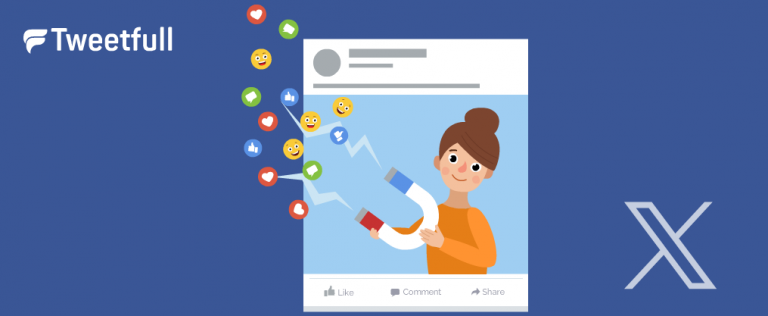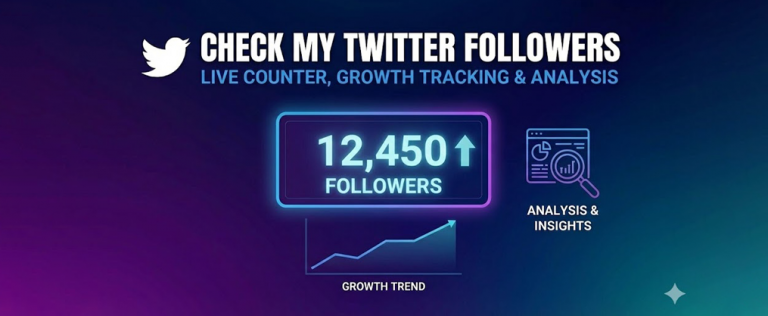Cleaning Up Your Twitter Followers Profile
Regularly reviewing and cleaning up the accounts you follow on Twitter is important for anyone, but especially for businesses that want to present a professional and trustworthy image. A well-maintained following list not only strengthens your brand’s appearance but also helps you interact more meaningfully with your audience. Basically, cleaning up your Twitter followers is about ensuring your profile reflects your current goals and interests. But why does it matter? The number and type of accounts you follow can influence how others view your credibility, authority, and overall presence on the platform.
The truth is, people often judge your Twitter account based on who you follow and who follows you. Your profile page is often the first place people look to assess your credibility and the quality of your followers. You might have followed some accounts for promotions, others because of shared interests, and some simply because you know them personally, such as friends or family. Regardless of your reasons, it’s important to periodically revisit your follower list and clean up Twitter followers who no longer add value to your social media presence, evaluating each person to determine if they are still relevant to your goals.
Introduction to Twitter Account Management
Managing your Twitter account goes beyond just posting tweets—it’s about curating a vibrant, engaged community that reflects your interests and goals. Effective Twitter account management means regularly reviewing your Twitter followers, identifying inactive accounts, and unfollowing accounts that no longer align with your brand or personal interests. By taking the time to remove bot followers and mass unfollow inactive users, you can significantly boost your engagement levels and reduce the amount of spam cluttering your feed.
A well-managed Twitter profile not only attracts new followers but also ensures that your audience is genuinely interested in your content. With the help of Twitter account management tools, you can streamline the process of identifying and removing inactive accounts, unfollowing users who no longer add value, and keeping your follower list fresh and relevant. These tools make it easy to mass unfollow accounts, remove bot followers, and maintain a healthy, active community. Ultimately, regular Twitter account management helps you optimize your profile, improve your online presence, and create a more meaningful experience for both you and your followers.
Unfollow Inactive Accounts
One of the first steps in the removal process is to unfollow inactive accounts. Twitter statistics suggest that about 20 percent of accounts are inactive at any given time. Following inactive users means your feed is cluttered with accounts that don’t post or engage, which diminishes the value of your Twitter experience. To identify inactive users, check their last tweet date—if they haven’t posted in over a month, they are likely inactive. When deciding whether to keep or remove an account, consider if there’s hope they will become active again. If you are hoping they will return to activity, consider keeping them a bit longer, but if not, it’s best to unfollow them.
For accounts with a large following list, manually cleaning up inactive users can be tedious and time-consuming. Large accounts with thousands of followers face even greater challenges and may require specialized tools or features to efficiently manage and organize their follower list. Fortunately, there are tools available to simplify this process. Automation tools, such as Circleboom Twitter or Tweetfull, can scan your follower list and help you mass unfollow inactive accounts, saving you time and effort. For example, Tweetfull offers a free trial that lets you experience how easy it is to remove inactive accounts linked to your Twitter account.
Unfollow Controversial Accounts
Another important aspect of cleaning up your Twitter followers is to unfollow controversial accounts. If you notice any accounts you follow that frequently post negative or divisive tweets, it’s a good idea to unfollow them. Is it really worth the bother to engage with such accounts? Often, it’s better to simply unfollow and move on. People often assume that if you follow an account, you support their views, which can harm your personal or brand reputation. Red flags for identifying suspicious Twitter accounts include default profile pictures, high follower-to-following ratios, and inactivity indicators. If an account is posting harmful or abusive content, you can also report the account to Twitter. To maintain a positive image, regularly search your follower list for keywords related to controversial topics or spam and unfollow accounts that do not align with your values.
Maintain a Healthy Follower to Following Ratio
Maintaining a balanced follower-to-following ratio is crucial for the credibility of your Twitter account. If you follow too many accounts compared to the number of people following you, users might perceive you as a promotional or spam account. For example, if you follow 1,500 people but only have 3,000 followers, some may think you are simply following others to gain follow backs, which is not an ideal impression. Using a reliable unfollow tool ensures compliance with Twitter’s rules, helping you maintain a professional and credible online presence.
Some users strategically follow people in their industry or niche to build credibility and expand their network, but be cautious not to follow too many, as this can still hurt your account’s perception.
To avoid this, set a maximum follower count for your following list based on your business size and goals. A good rule of thumb is to maintain a ratio where your followers outnumber the people you follow by at least 10:1, though you may prefer a different ratio or method depending on your specific objectives. Alternatively, you can choose a fixed number, such as following no more than 100 or 200 accounts, to keep your Twitter account looking clean and professional.
Additionally, always make sure to follow Twitter’s rules regarding following and unfollowing practices to avoid account restrictions or penalties.
Unfollow Irrelevant Accounts
After removing inactive and controversial accounts, the next step is to unfollow irrelevant accounts. These might include celebrity profiles, other businesses, or individuals you followed during past promotions but no longer have any connection or relevance to your current business or interests. Review your follower list carefully and identify accounts that are the wrong fit for your current goals. Decide which accounts truly deserve a place there.
As part of this cleanup, check which accounts you have already unfollowed or which have unfollowed you, using available tools to help manage your list more effectively. Some tools even allow you to select specific accounts for bulk unfollow actions, making the process more targeted and efficient. Remember, the fewer accounts you follow, the more focused and valuable your Twitter feed becomes.
Use Twitter Automation Tools
Managing your follower list manually can be overwhelming, especially for business accounts that need to maintain and grow their audience simultaneously. This is where automation tools and follow tools come into play. Many platforms offer follow tools to help you find, follow, and manage relevant followers, making it easier to grow and engage your Twitter audience. Tools like Circleboom Twitter and Tweetfull automate the process of following and unfollowing accounts at the right time, using algorithms and artificial intelligence to optimize your social media presence. However, use third-party apps with caution to speed up the process of managing Twitter followers, ensuring they comply with Twitter’s rules and do not compromise your account’s security. You may need to sign in or sign up to these tools to begin managing your followers.
These tools not only help you mass unfollow unwanted followers, including bot accounts, spam accounts, and fake followers, but they also assist in creating Twitter lists to organize users with similar interests. Some tools allow you to manage multiple accounts simultaneously, streamlining the cleanup process for users with more than one Twitter profile. You can create a new list to better organize your followers and streamline your engagement strategy. These tools also help you remove Twitter followers efficiently, saving you time compared to manual removal. Many Twitter unfollow tools help track unfollowers and make it easier to unfollow users who are not engaged with your content. When using these platforms, navigate to the appropriate tab, such as the ‘Unfollow Accounts’ tab, to access specific features for managing your followers. Automation apps allow you to spend less time managing your account and more time engaging with your audience, posting interesting tweets, and supporting your followers through comments and retweets. With these tools, you can access advanced features such as managing lists, feeds, and notifications, as well as organize and monitor messages from different sources for better engagement. Additionally, you can manage your account settings, including privacy and audience controls, directly through these automation platforms.
Removing Unwanted Followers
Keeping your Twitter account’s follower list clean and relevant is essential for building a strong, engaged audience. Removing unwanted followers—such as inactive accounts, fake followers, spam accounts, and bot accounts—helps ensure your Twitter followers are genuinely interested in your tweets and contribute positively to your social media presence. As you go through this process, note which followers you have removed or plan to remove to keep track of your cleanup progress.
Start by identifying which Twitter followers you want to remove. Look for inactive users who haven’t tweeted in a long time, fake followers with suspicious profiles, and spam accounts that post irrelevant or harmful content. Twitter lists can be a helpful tool for organizing your follower list and making it easier to search for accounts with similar interests or spot those you no longer want to follow anymore. You can also use the unfollow button to unfollow people directly from your follower list if you decide you no longer want to see their content.
To delete Twitter followers, use Twitter’s built-in “remove follower” feature. Simply go to your follower list, click the three dots next to the follower’s name, and select “Remove this follower.” This process allows you to remove followers without blocking them, so they won’t be notified and can’t interact with your tweets unless they follow you again. Alternatively, you can perform a “soft block” by blocking a user and then unblocking them to remove them from your followers list. This feature is available on both the Twitter website and mobile app, making it easy to manage your followers from anywhere.
For those managing larger Twitter accounts or looking for more advanced options, tools like Circleboom Twitter offer powerful features to help you remove unwanted followers efficiently. Circleboom Twitter can identify and remove fake followers, inactive accounts, and spam accounts, streamlining the removal process and helping you maintain a high-quality audience. These platforms can also help you unfollow users in bulk or based on specific criteria, and provide data and analytics to help you decide which users to keep or remove, making it easier to manage your follower list and support your engagement goals.
When removing followers, it’s important to proceed manually and gradually. Avoid unfollowing people too quickly or in large numbers, as this can trigger Twitter’s anti-spam measures and potentially lead to account suspension. Instead, review your follower list regularly, use analytics to track engagement, and remove followers who no longer add value to your Twitter account.
By consistently removing unwanted followers and focusing on building a community of active, interested users, you’ll improve your Twitter engagement rates, boost your credibility, and strengthen your overall social media strategy. Take the time to review your follower list, use the right tools, and keep your Twitter account in top shape for maximum impact.
Streamlining Your Profile
A streamlined Twitter profile is key to maintaining a healthy and engaging online presence. By regularly removing inactive accounts, bot followers, and unwanted followers, you can ensure your Twitter account remains active and appealing to new followers. Using Twitter account management tools, you can quickly mass unfollow accounts that no longer align with your interests, remove bot followers, and identify inactive users with ease.
These tools also allow you to analyze your follower list, making it simple to spot accounts that are no longer relevant and unfollow them in just a few clicks. Additionally, organizing your followers into Twitter lists can help you categorize users by interest or relevance, making it easier to identify and remove unwanted accounts. This process not only helps you maintain a focused and valuable follower list but also improves your engagement levels by ensuring your audience is genuinely interested in your tweets.
By streamlining your Twitter profile, you create a more attractive and interactive space for new followers, enhance your online reputation, and make it easier to manage your account over time. Regularly cleaning up your Twitter followers and removing inactive accounts is essential for anyone looking to maintain a strong, active presence on the platform, and with the right tools, the process becomes efficient and hassle-free.
Tips for Efficiently Cleaning Up Twitter Followers
The first thing you should do is log into your Twitter account
To efficiently clean up your Twitter followers, begin by logging into your Twitter account and accessing your follower list. Use the unfollow button next to each account or the “three dots” menu to remove followers you no longer want. As you do this, review your posts and make sure they reflect your current interests and the type of engagement you want. For a faster process, consider using a free or paid app that offers one-click mass unfollow features. When choosing a tool, prioritize user-friendly options with intuitive interfaces, as these make the cleanup process easier and more efficient for the user. These tools often provide data analytics on your followers, such as their activity status and engagement levels, helping you decide who to keep and who to remove.
Creating Twitter lists can also help you manage your audience better by grouping users with similar interests, making it easier to interact with active and relevant followers. Understanding how the Twitter algorithm works can further inform your strategy. You can use lists to track retweet activity and see who is actively engaging with your content. Always keep an eye on the last tweet dates of accounts you follow, and prioritize removing those who haven’t posted recently or show signs of being bots or spam accounts.
Engaging in meaningful talk and talking with your followers can help you identify who adds value to your network. Try to mention users in your tweets to foster engagement and see who responds.
If you have any questions or tips about cleaning up Twitter followers, leave a comment below!
Conclusion
Cleaning up your Twitter followers is a valuable practice that enhances your social media presence and supports your personal or business brand. By unfollowing inactive users, controversial accounts, irrelevant profiles, and maintaining a healthy follower-to-following ratio, you ensure that your Twitter account remains engaging and credible. Using automation tools like Circleboom Twitter or Tweetfull can make the removal process easier and more efficient, allowing you to spend more time creating valuable content and interacting with your audience. Start today to rid your Twitter account of unwanted followers and enjoy a cleaner, more active, and supportive follower list.







